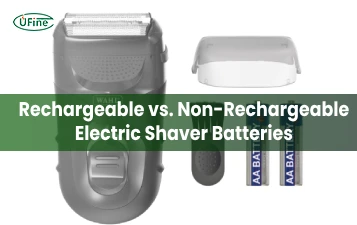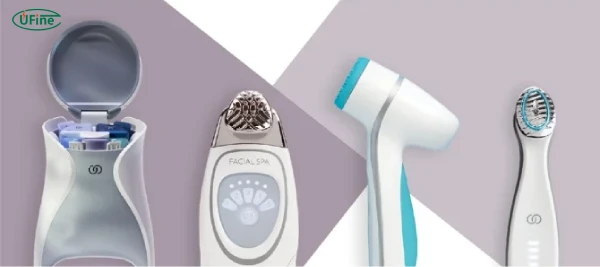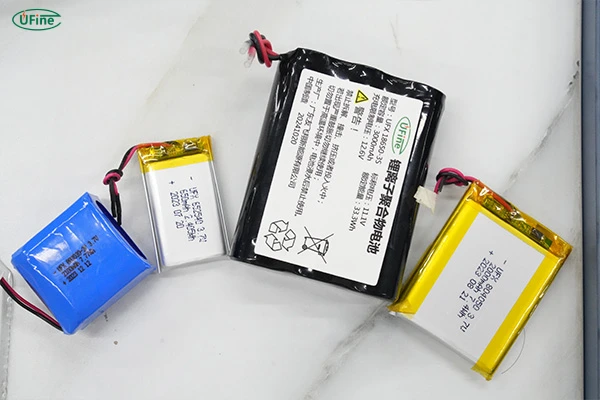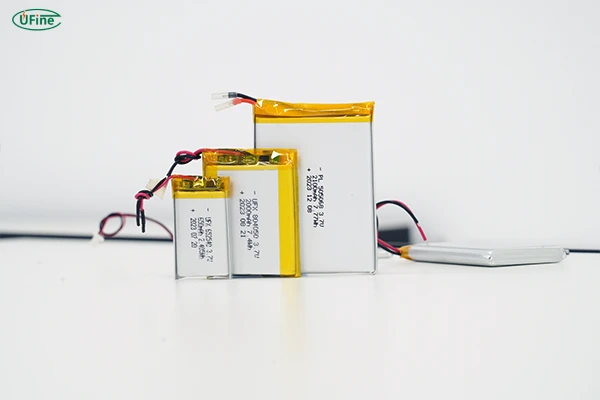Battery failure in skin care devices is more common than you’d think. Whether you’re using a facial cleansing brush, microcurrent tool, LED mask, or ultrasonic scrubber, your skin care device battery plays a crucial role in how effective and convenient your beauty routine is.
But here’s the good news: You can make your device’s battery last much longer. And in this article, we’re diving deep—no fluff—into what makes batteries tick, how they wear down, and most importantly, what you can do to keep them strong.
Let’s get started.
Part 1. Common skin care device battery types
Understanding your battery is the first step to caring for it.
Most skin care devices use one of these three types:
- Lithium-Ion (Li-ion): The most common battery type today. Lightweight, rechargeable, and long-lasting. Great for frequent users.
- Nickel-Metal Hydride (NiMH): Found in older or budget-friendly models. Shorter lifespan and less power-efficient than lithium batteries.
- Alkaline Batteries: Usually disposable. Found in very basic or portable skin care tools.
Out of these, lithium-ion stands out as the most efficient and practical option for modern users. They’re not just longer-lasting—they’re safer and smarter, too.
If your current device doesn’t use lithium batteries, and you’re facing battery issues, it may be time for an upgrade.
Part 2. Which battery type is best for skin care devices?
Let’s make it simple: Lithium-ion is king. Why?
- Higher energy density: More power in a smaller size.
- No memory effect: Unlike NiMH, they don’t lose capacity when recharged before empty.
- Lower self-discharge rate: They hold charge longer when not in use.
- Longer life span: Fewer replacements, better for your wallet.
Ufine Battery—a trusted Chinese custom lithium battery manufacturer—offers a wide variety of high-performance lithium batteries, including Li-ion, LiFePO4, and lithium polymer options. Whether you’re an end-user or a device manufacturer, Ufine can create custom solutions based on your voltage, size, temperature, or capacity needs.
If you’re building or sourcing skin care devices, working with a custom battery supplier like Ufine can dramatically improve device quality and longevity. Contact Ufine Battery here to discuss your project.
Part 3. What affects skin care device battery life?
Just like your skin, your battery’s lifespan is affected by daily habits and environment. Here’s what you should watch for:
- Usage frequency: Daily use drains the battery faster, especially on high power settings.
- Charging habits: Overcharging or letting your battery hit zero too often shortens its life.
- Temperature exposure: Heat and cold can damage battery chemistry.
- Storage conditions: Leaving your device fully discharged for long periods degrades the battery.
- Build quality: Devices with low-grade or generic batteries tend to have shorter lives.
In short: Be gentle. Your device’s battery needs just as much TLC as your skincare routine.
Part 4. Warning signs your battery is wearing out
Sometimes your skin care device will tell you it’s tired—if you’re listening.
Here are signs your skin care device battery might be near the end of its life:
- It loses power too quickly.
- Charging takes longer than usual.
- The device feels unusually warm during use or charging.
- You need to charge it more frequently than before.
- Performance feels weaker or inconsistent.
If two or more of these signs show up, it’s time to take action. Either adjust your charging habits or consider replacing the battery.
Part 5. How long should a skin care device battery last?
Battery lifespan depends on usage patterns and type, but here’s a general guide:
Battery TypeAverage Lifespan (with proper care)Lithium-ion2–5 years or 300–500 charge cyclesNiMH1–2 years or ~300 cyclesAlkalineWeeks to months (non-rechargeable)
Check your device’s manual for expected battery life. If you don’t see this information, contact the brand or, better yet, consider a skin care device that uses high-quality custom batteries—like those manufactured by Ufine Battery.
Part 6. Charging mistakes you must avoid
Here’s where most people go wrong. These common mistakes shorten your battery life dramatically:
- Leaving it plugged in overnight – This leads to overcharging, especially with low-end chargers.
- Using random or off-brand chargers – Always use the charger that came with your device.
- Charging in hot areas – Never charge your device near windows, stoves, or heaters.
- Letting the battery hit 0% regularly – It’s better to recharge around 20–30%.
- Not unplugging at 100% – Lithium-ion batteries don’t like being held at full charge for too long.
Takeaway? Treat your charging routine as part of your skin care ritual—consistent, intentional, and careful.
Part 7. Best charging practices for longer battery life
Here’s how you should charge your skin care device battery for optimal performance:
- Charge when the battery reaches 20–30%.
- Unplug around 90–100%—don’t keep it on the charger all night.
- Use frequent mini-charges instead of letting it drain and refilling all at once.
- Avoid using the device while charging, especially if it gets hot.
And if you’re a product developer? Choose batteries from experienced manufacturers like Ufine Battery that provide high-rate and high-temperature resistant cells, so you can build smarter charging protection into your product from the start.
Part 8. Cleaning and battery safety
Water and electricity don’t mix—ever.
Here’s how to clean your skin care device without risking your battery:
- Turn it off and unplug before cleaning.
- Never immerse the charging port in water.
- Use a slightly damp cloth, not a soaking one.
- Avoid harsh chemicals near the battery compartment.
- Dry the device completely before plugging it back in.
Also, don’t open the device or battery compartment unless the manual says it’s safe to do so. Damaging the battery casing can cause leaks, overheating, or even fire.
Part 9. When to replace your skin care device battery
Even the best batteries wear out. If you notice the following issues, it may be time for a replacement:
- Battery drains in under 10 minutes
- Device doesn’t turn on even after full charge
- Device becomes hot to the touch during use
- LED indicators show incorrect battery status
Unfortunately, many skin care devices don’t have replaceable batteries. If yours does, great! Reach out to the brand or supplier for a new one.
If you’re a brand or manufacturer, consider using custom Ufine lithium batteries that are modular or easily serviceable to boost consumer trust and satisfaction.
Part 10. Final words
Your skin care device battery deserves just as much attention as your skin. The way you use, charge, and clean your device has a huge impact on its lifespan.
Simple habits like avoiding overcharging, storing it in the right environment, and choosing devices with high-quality lithium-ion batteries can save you time, money, and frustration.
If you’re looking for batteries you can trust, consider Ufine Battery—a leading Chinese lithium battery manufacturer offering custom battery solutions for skin care tools and other electronic devices. They specialize in LiFePO4, lithium polymer, high-temperature batteries, ultra-thin designs, and much more.
Related Tags:
More Articles

Rechargeable vs. Non-rechargeable Electric Shaver Battery: How to Choose?
Discover which electric shaver battery—rechargeable or non-rechargeable—is right for you. Dive deep into types, pros, cons, and battery life tips.
Long-Lasting Beauty Devices: Find the Best Rechargeable Battery!
Discover the best rechargeable beauty devices, compare battery types, and learn how to choose and maintain the longest-lasting beauty tool for your needs!
60Ah Battery: The Complete Guide You Need Before Choosing One
Find out if a 60Ah lithium battery is right for you. Learn about its lifespan, costs, maintenance tips, and how to pick the best one!
Is a 3000 mAh Lithium Battery Enough for Your Device?
Wondering what a 3000mAh battery means? Learn about its power, lifespan, types, and how to choose the best one for your device!
Learn About Lithium Battery Kits
Discover the ultimate guide to lithium battery kits—types, safety, installation, and cost analysis. Make the right choice for solar, RV, or off-grid power!






